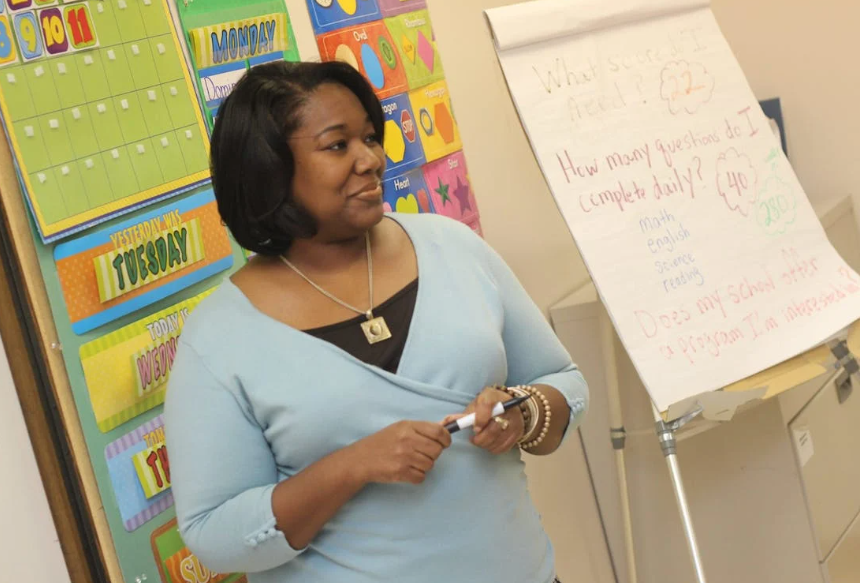Mindfulness Association
Why might you want to train to teach Mindfulness?
New career? Helping Share the benefits of Mindfulness?

Selfpause Affirmation App
Download the app to get 1,000’s of affirmation meditations and everything you need to write, record and listen to your own.
The Mindfulness Association (MA) runs courses to learn mindfulness and train mindfulness teachers. These courses are available both online and at one of their training centres in the UK. These courses are run by highly qualified, compassionate instructors with decades of experience. These courses are suitable for beginners, experienced practitioners, and those who want to teach others.
Creating standards for training mindfulness teachers

The pedagogy of mindfulness-based teaching is complex, and it requires teachers to have strong skills and theoretical knowledge. In addition to acquiring the necessary knowledge, trainees should acquire relational skills and an understanding of psychological processes. Additionally, they should have some background in cognitive behavioral therapy and its foundations.
Creating standards for training mindfulness teachers is one way to ensure the quality of the field. The purpose of curriculum development for trainees is to equip teachers with the skills and capacity to transmit mindfulness. This can be done through explicit and implicit means. These methods may include relational styles, embodiment, and curriculum content.
A central mechanism of mindfulness-based approaches is to help participants shift from doing to being. The teacher communicates by sharing his or her experience of being. Teaching mindfulness meditation to others can help facilitate this shift. In addition, this form of teaching is a valuable skill in itself. Developing these skills will help mindfulness teachers to better serve their clients.
A number of difficulties have emerged in introducing mindfulness-based courses into the clinical environment. While the NHS is committed to using proven therapeutic practices, it is difficult to introduce a new approach into a work culture where the goal is to achieve the best results. Because the approach is new, the standards are still developing. This lack of support means that practitioners using mindfulness-based interventions may be inadequately prepared.
An effective mindfulness teacher training program should provide subject matter expertise and experience, as well as an understanding of the mindfulness-based approaches. In addition, the curriculum should include evidence-based practice, a supervisor who attends teaching sessions, and ongoing development. Training programs should include continuing education and participation in web forums. The program should also have an ethical framework that reflects the background of the teacher.
The training program should incorporate the following elements: First, trainees engage in a mindfulness-based learning program. This allows trainees to explore the fruits and challenges of non-judgemental attention. Next, they should take an MBSR or MBCT course. Finally, trainees should engage in ongoing personal practice of mindfulness.
Cost of teacher training programs

The cost of teacher training programs at mindfulness associations varies widely. However, some programs are less expensive than others, and they can be a cost-effective alternative to more expensive training. We’ve compiled the costs of the four-day, instructor-led course and the self-taught, 1-day training in one cost-effective analysis.
A typical course will cost around $14,225. The cost for a full training program consists of five eight-week courses and ten hours of mentorship. Typically, it will take two years to complete. Depending on instructor availability, the full program may take a little longer.
The IMTA also provides a certificate to those who finish a program. This certificate will serve as a reference for prospective employers. Teachers can also use it to teach mindfulness in their companies. The association also offers teacher training programs and certification. IMTA’s certification programs are accredited by the Association, and it will grant certification to those who meet the standards.
After passing the Foundations course, a trained MSC teacher may choose to participate in a second training course. CMSC also offers workshops and events for teachers in their community. These are communicated in their quarterly newsletter, the “Teacher Bulletin,” and on their Teacher Dashboard. Additionally, trained MSC teachers who are also health care providers may apply to become a small group leader in the Self Compassion in Healthcare program.
Depending on the type of training and the curriculum, there may be some differences in the cost. For example, the Cultivating Awareness and Resilience in Education program requires a total of 30 hours over five days. It includes a series of coaching calls. Similarly, the Learning to Breathe program is designed for teachers to deliver mindfulness to students. Although it does require an additional 2 to 3-day training, it’s free and includes downloadable materials.
Teachers with a background in mindfulness may benefit from this training. IMTA certification requires an applicant to complete a reputable, 200-hour teacher training program. In addition, they must have a personal practice of at least 10 years. In addition, they must also complete a rigorous screening process to ensure that they meet the program’s standards. Some future standardized assessments may be required.
Organizations that offer teacher training programs

Organizations that offer teacher training programs are helpful for both students and educators. Membership in such organizations allows teachers to network with other professionals and to keep up on current topics and trends. These organizations can range from small local organizations to large national ones. These organizations are divided into different subject areas and can be an invaluable source of support and information.
The American Association for the Education of Young Children (AAE) is a nonprofit organization that promotes education through professional development. Its mission is to foster a positive educational environment for children and educators worldwide. Its members include teachers, administrators, and education professionals. Members have access to a newsletter, liability insurance, and other resources and services to enhance their careers.
Organizations that offer teacher training programs for gifted children can be very helpful. The NAGC, for example, offers training for educators to become certified to work with gifted children. They also provide members with a quarterly journal that features information on how to develop gifted children in school and the home setting. Members can also network with their colleagues at NAGC conferences.
Organizations that offer teacher training programs must meet certain standards. The HEA requires teacher preparation programs to report data to the federal government and the state. The previous report looked at data from the 2017-18 academic year. The most recent report includes information on the data for the 2018-19 academic year. The report also looks at trends since 2010-11.
Organizations that offer teacher training programs are a vital part of creating a great community. Great schools start with great teachers. Florida State University’s College of Education prepares new teachers for the challenges of the classroom and the rewarding career of teaching. Studies have shown that a good teacher has a significant impact on student achievement. A truly good teacher can make a significant difference in a student’s academic career, even years after graduation.
Many educators benefit from opportunities to share ideas and support one another. Working together in the same program allows educators to work together in new ways to develop new ideas. A new teacher can learn from other educators who have been in similar situations.
Resources for teachers

Essential Resources for Teachers of Mindfulness is an extensive book, offering comprehensive knowledge about teaching mindfulness. It addresses the core components of mindfulness pedagogy and includes reflective essays from MBI teachers around the world. The book also offers guidance for teaching mindfulness to special populations, including trauma survivors and chronic pain patients. Moreover, it includes a section on mindfulness-based interventions for health care professionals and clergy.
Mindfulness practice is a powerful tool for educators. It can help them restore calm in their fast-paced lives, as well as help students focus better. Teachers can find numerous resources on the web, including articles and videos. For example, TED Talks by Andy Puddicombe on mindfulness show how ten minutes of “doing nothing” can change our lives. Additionally, CARE for Teachers is a professional development program that uses mindfulness to help teachers deal with stress and burnout.
Teachers can benefit from a free weekly resource email that offers a variety of strategies and resources. The Mindfulness in Education Network’s Mindfulness in Education Conference, for example, features keynote speakers and educators who specialize in mindfulness education. Its listserv is also a useful resource. It offers articles and news on current mindfulness research, as well as information on resources and conferences.
Moreover, Edutopia’s flagship series, Edutopia Weekly, highlights best practices in education. This e-zine is filled with powerful strategies and tips, as well as case studies. Teachers can use these resources to introduce mindfulness to their students. It’s a great way to make students feel comfortable with mindfulness.
There are also numerous free resources online that help educators implement mindfulness in their classrooms. The popular meditation app Calm offers an online program for K-12 educators and teachers, and it offers free meditation sessions tailored to the age group of students. Calm also offers a free guide on how to introduce mindfulness to schools, which is particularly helpful for educators.
There is a growing body of research supporting the use of mindfulness in schools. Its application can improve student focus and reduce stress. Teachers can use mindfulness apps in their classrooms and help students achieve their educational goals through a more relaxed and focused classroom environment.
Our Top FAQ's
Mindfulness is a mental state achieved by focusing one’s awareness on the present moment, while calmly acknowledging and accepting one’s feelings, thoughts, and bodily sensations, used as a therapeutic technique. Mindfulness can be practiced through various techniques, such as meditation, breathing exercises, and yoga.
There is a growing body of research suggesting that mindfulness training may have a range of benefits, including reduced stress and anxiety, improved emotional regulation and cognitive flexibility, and increased well-being and overall quality of life. It may also have physical health benefits, such as lower blood pressure and improved immune function.
There are many ways to incorporate mindfulness into daily life, such as setting aside dedicated time for mindfulness practices, such as meditation, bringing mindfulness to daily activities such as eating or walking, and cultivating a mindful attitude throughout the day.
While mindfulness training is generally considered safe and has few reported risks, some individuals may find certain mindfulness practices to be uncomfortable or triggering. It is important to approach mindfulness training with an open and nonjudgmental attitude, and to be mindful of one’s own limitations and needs.
There is a growing body of scientific evidence supporting the effectiveness of mindfulness training. Studies have consistently shown that mindfulness training can lead to a range of positive outcomes, including improved mental and physical health, enhanced well-being, and increased cognitive and emotional flexibility.
